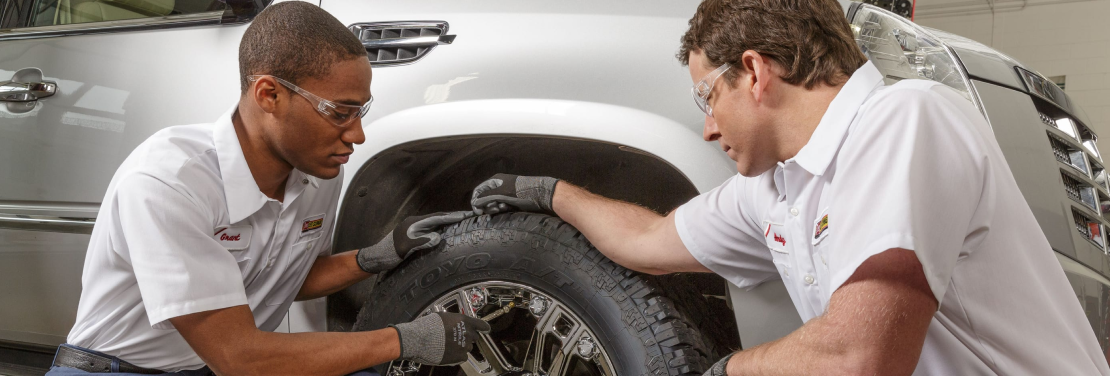Tire Solution: Understanding Tire Stress Monitoring Systems
Comprehending Tire Pressure Surveillance Solutions (TPMS) is a vital aspect of preserving optimal lorry efficiency and safety on the roadway. With innovations in automobile innovation, TPMS has actually come to be a conventional function in contemporary lorries, offering real-time info on tire stress degrees.

Relevance of TPMS
The importance of Tire Stress Surveillance Solutions (TPMS) lies in their ability to improve car safety and performance via real-time tracking of tire stress degrees. Keeping the right tire pressure is vital for making certain optimal handling, braking, and total security of a car. TPMS offers chauffeurs with prompt responses on any type of overinflated or underinflated tires, enabling timely changes to be made.
Components of TPMS
Making up various vital aspects, a Tire Pressure Monitoring System (TPMS) works as an innovative safety function in modern automobiles. The major components of a TPMS include sensors, a control component, and a caution indication. Sensing units are usually located in the tire shutoff stem or connected to the wheel setting up, where they determine tire pressure and transfer information to the control component. If it discovers dramatically reduced stress in any of the tires, the control module procedures this info and causes a caution. The caution sign, frequently an icon on the dashboard, notifies the chauffeur to inspect the afflicted tire or tires. Some advanced TPMS designs also display the actual tire stress readings for each tire, providing drivers with real-time details to ensure ideal tire performance and security. By keeping an eye on tire stress continuously, TPMS aids stop crashes, reduces tire wear, and boosts gas efficiency, making it a vital element for automobile security and performance.
Sorts Of TPMS

On the other hand, indirect TPMS counts on the lorry's wheel rate sensors to keep an eye on tire stress. This system finds underinflation by comparing the rotational speeds of the wheels. Indirect TPMS is less costly than straight TPMS, as it makes use of existing sensors within the car.
While straight TPMS supplies a lot more precise readings, indirect TPMS is less complex in design and commonly calls for much less upkeep. Both systems have their limitations and benefits, and the option between them frequently depends upon factors such as cost, car make, and personal choice. Comprehending the distinctions between these 2 sorts of TPMS can assist lorry owners make notified Recommended Reading decisions regarding tire maintenance and i was reading this safety and security.
TPMS Upkeep Tips
Efficient upkeep of TPMS is necessary for ensuring optimum performance and security of your vehicle. Frequently examining the TPMS sensing units for any damage or rust is essential. Make certain that the sensors are tidy and free from debris that can disrupt their functioning. Additionally, it is a good idea to examine the sensing unit batteries regularly and change them as needed to guarantee precise analyses. Conduct regular look at the tire pressure degrees and compare them with the TPMS analyses to ensure they are regular. Alter the system complying with the maker's guidelines if there are any disparities. Throughout tire turning or substitute, make sure that the TPMS elements are taken care of thoroughly to protect against any potential damages. Lastly, if the TPMS cautioning light brightens on the control panel, deal with the issue promptly by inspecting the tire stress and the total system for any type of faults. By adhering to these maintenance ideas, you can extend the lifespan of your TPMS and boost the security of your driving experience.
Benefits of Proper Tire Stress
Preserving proper tire stress, as emphasized in TPMS Maintenance Tips, is vital for reaping the various advantages connected with ideal tire pressure levels. One of the primary advantages of keeping the appropriate tire pressure is enhanced gas effectiveness. When tires are appropriately pumped up, there is less moving resistance, leading to far better fuel economic climate. Additionally, proper tire stress makes sure also tire wear, expanding the life-span of the tires and promoting much safer driving problems. With the ideal tire pressure, automobiles also have better handling and grip, especially in unfavorable climate problems. This can improve general driving efficiency and safety and security for the chauffeur and guests. Moreover, maintaining optimum tire stress can add to a smoother and a lot more comfy trip by lowering resonances and noise triggered by underinflated tires. Finally, the benefits of proper tire Clicking Here pressure surpass simply tire durability; they incorporate boosted gas efficiency, enhanced security, better car performance, and total driving convenience.
Verdict
To conclude, recognizing tire pressure tracking systems (TPMS) is essential for keeping ideal tire pressure and making sure lorry safety. By acknowledging the relevance of TPMS, being familiar with its parts, recognizing the various types readily available, adhering to proper upkeep ideas, and understanding the benefits of preserving proper tire stress, vehicle drivers can boost their driving experience and lengthen the lifespan of their tires. Correct tire pressure is crucial to efficient and secure car operation.
